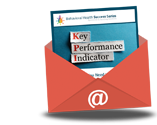
14 Jun The Long-term Mental Health Impact from Adverse Childhood Experiences
An unfortunate reality is that many children experience devastating ordeals in their young lives. A close family member commits suicide. Parents get divorced. The child experiences abuse or neglect. These traumatic events are referred to as adverse childhood experiences (ACEs). They are closely linked to problems with school and employment, as well as physical and behavioral health conditions. The toxic stress caused by ACEs disrupts brain development leading to problematic health and social outcomes decades later. Pediatricians can guard against these negative impacts by promoting healthy childhood development, prioritizing prevention, and advocating for social change.
The Groundbreaking Kaiser-CDC Study
In 1998, CDC and Kaiser Permanente published a study of over 17,000 HMO members comparing health data and confidential surveys about their childhood experiences. The researchers separated childhood exposure into two broad sections—abuse and household dysfunction. They further categorized abuse as psychological, physical, and sexual. Household dysfunction included substance use, mental illness, domestic violence, and criminal behavior.
Over half the participants in the study reported exposure in at least one category during their childhood. Women were more likely to fall into multiple ACE categories as compared to men. When looking at race and ethnicity, Asian Americans had the lowest prevalence overall; whereas, the prevalence was much higher for Black and Hispanic people when compared to both Asians and Whites.
The Kaiser-CDC study found significant links between adverse childhood experiences and health risks later in life. The data revealed a correlation between the number of ACEs and the increased risk of adverse outcomes, with long-term health consequences increasing incrementally for one, two, or three exposures. These rates increased sharply for those who fell into four or more ACE categories.
Long-term Physical Health Consequences
The link between ACEs and poor physical health seems to be based on behavioral factors such as smoking, abusing drugs, and taking sexual risks. Exposure to childhood trauma may lead adults to develop unhealthy coping strategies like overeating or heavy drinking—the underlying causes of obesity and liver disease, respectively. Abuse and household dysfunction in childhood are linked to a slew of health problems in adulthood.
- Heart disease
- Sexually transmitted infections
- Severe obesity
- Chronic lung disease
- Cancer
- Fractures
- Liver disease
- Poor overall health
Impact on Behavioral Health
Environmental and genetic influences affect learning, adaptive behaviors, and lifelong mental health. Early experiences impact a person’s ability to adapt and cope with changes later in life. Unfortunately, ACEs leave many children without the protection of stable relationships, which build resiliency against toxic stress. Often the ACEs are what created the stressful environment in the first place. When a child feels unsafe, they may experience a prolonged activation of the sympathetic nervous system. An overactive stress response eventually becomes toxic stress which hinders the development of crucial neural connections. Maladapted neural connections negatively impact mental health outcomes later in life. People who experienced ACEs are more likely to develop substance use disorders, depression, and suicidal tendencies.
Social and Economic Consequences
Unfortunately, childhood adversities maintain the cycle of generational poverty. Children who live in low socio-economic environments are statistically at a greater risk of abuse and household dysfunction. Likewise, those who experience childhood trauma are more likely to struggle with education, employment, and finances in adulthood. High ACE scores are associated with dropping out of school, unemployment, and living below the poverty line. Evidence suggests that building resilience and reducing trauma in childhood could help break the poverty cycle. For example, children need structure in their lives, so maintaining consistent routines and boundaries builds a sense of security. Likewise, nurturing self-esteem helps children weather hardships.
Screening for Adverse Childhood Experiences
The Department of Health Care Services has approved specific screenings for adverse childhood experiences. For example, the Bay Area Research Consortium developed the Pediatric ACEs and Related Life-events Screener (PEARLS) to identify exposure to adverse events in childhood. Pediatricians can use this free screening tool with all children they serve. Many different traumatic childhood experiences may increase the health risks associated with toxic stress. PEARLS expands beyond the initial ACEs identified in the Kaiser-CDC study to include bullying, community violence, food insecurity, and homelessness.
Collaborating with Behavioral Healthcare
The link between ACEs and adverse health outcomes as adults is chiefly behavioral. High-risk behaviors, such as smoking, are viewed as problematic by society. But many people engage in these behaviors as coping mechanisms. For example, a woman who was sexually abused as a child may overeat in an unconscious attempt to remain sexually unattractive. Her primary care provider attributes her obesity to an eating disorder—but the diagnosis stops there, and the actual source is never discovered. Likewise, when an adult presents with liver disease, the practitioner traces the cause to chronic drinking. The underlying reason however, is that the patient relies on alcohol to cope with childhood trauma.
It is particularly crucial for pediatricians to screen for ACEs and other risk factors. Early intervention can go a long way in mitigating adverse health outcomes in the future. By collaborating with behavioral healthcare providers, primary care practitioners can address the underlying causes of many chronic health conditions. Integrating behavioral and social services as part of pediatric care gives children and families a head start learning healthy coping skills to build resiliency and combat adverse health outcomes.
Screening and Tracking with EHRs
Electronic Health Records (EHRs) can help pediatric offices incorporate ACE screenings into the clinical workflow. A flexible EHR is essential for developing a comprehensive template for tracking ACE scores and follow-up. Building data tracking capabilities into the records helps the entire organization integrate ACE screenings consistently. Data collection templates should include screening results as well as symptoms, referrals, and screening refusals. Detailed EHR dashboards help practitioners discover patterns and connections between ACEs and other health outcomes.
Mitigating the Harms of Adverse Childhood Experiences
The best protection against the long-term effects of adverse childhood experiences is building resiliency through stable, nurturing relationships. When stressors occur, a sense of safety helps the sympathetic nervous system return to a normal state. Pediatric practitioners and other healthcare providers are uniquely placed to influence childhood health and development through regular interactions with children, families, and communities.
- Establish a trusting relationship with families
- Keep a comprehensive list of community resources
- Build professional contacts with community support services
- Screen for ACEs and other childhood risks
- Assess family strengths and weaknesses
- Identify and refer for needed services
- Equip families with behavioral management tools
- Use EHRs to track referrals and follow-ups
The proper educational guidance can encourage families to incorporate positive parenting approaches, strengthen social supports, and promote healthy social-emotional development.



Sorry, the comment form is closed at this time.